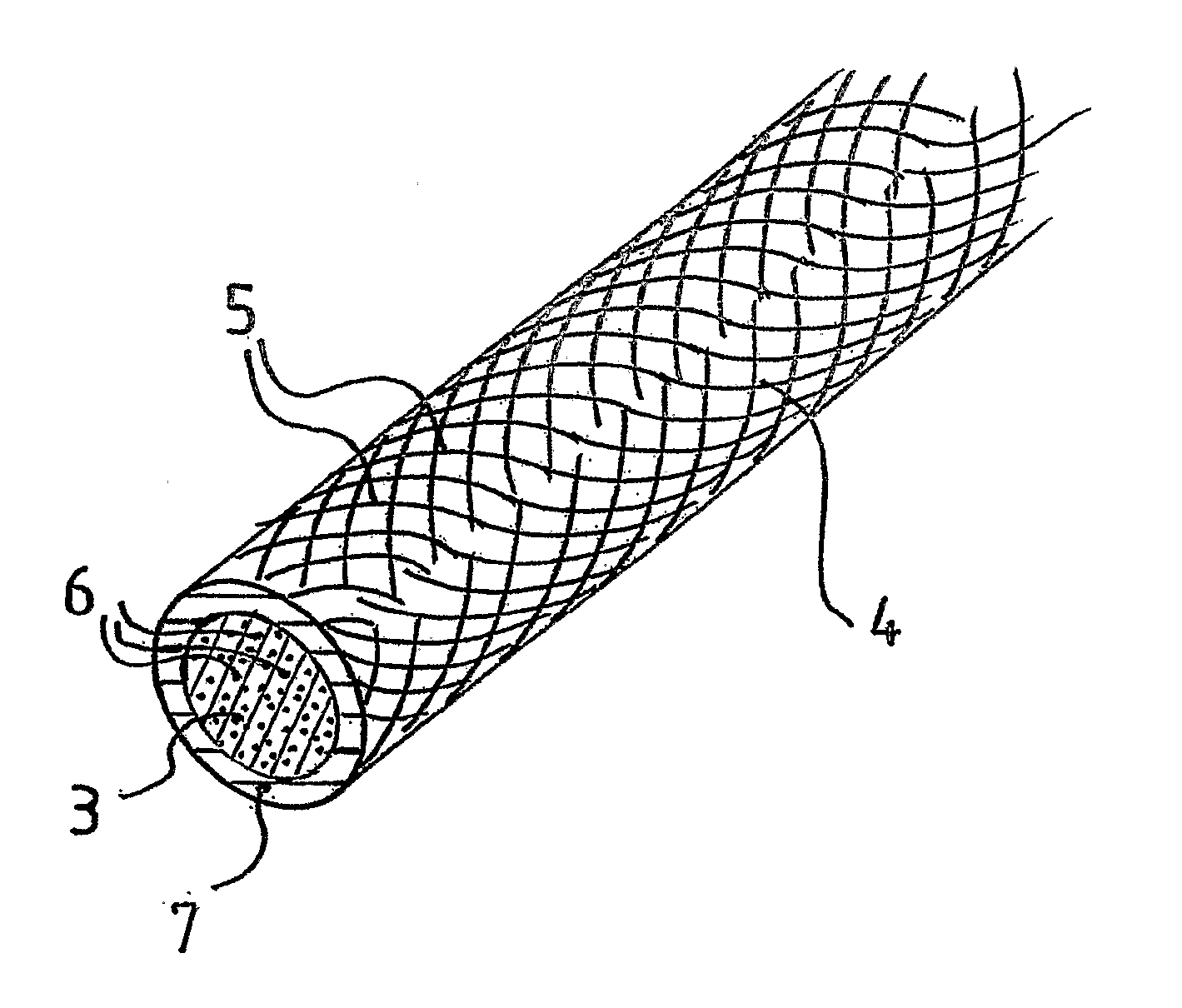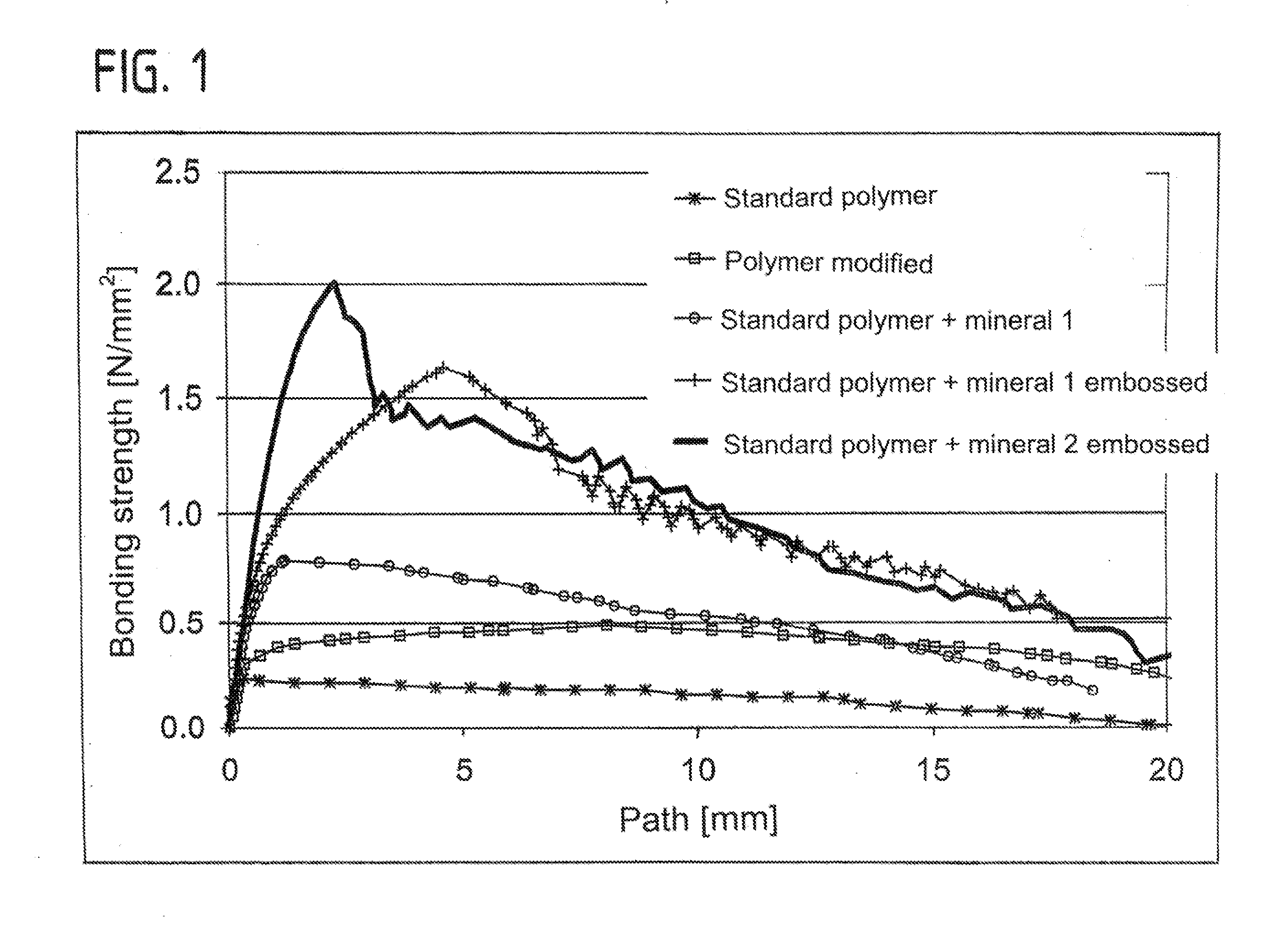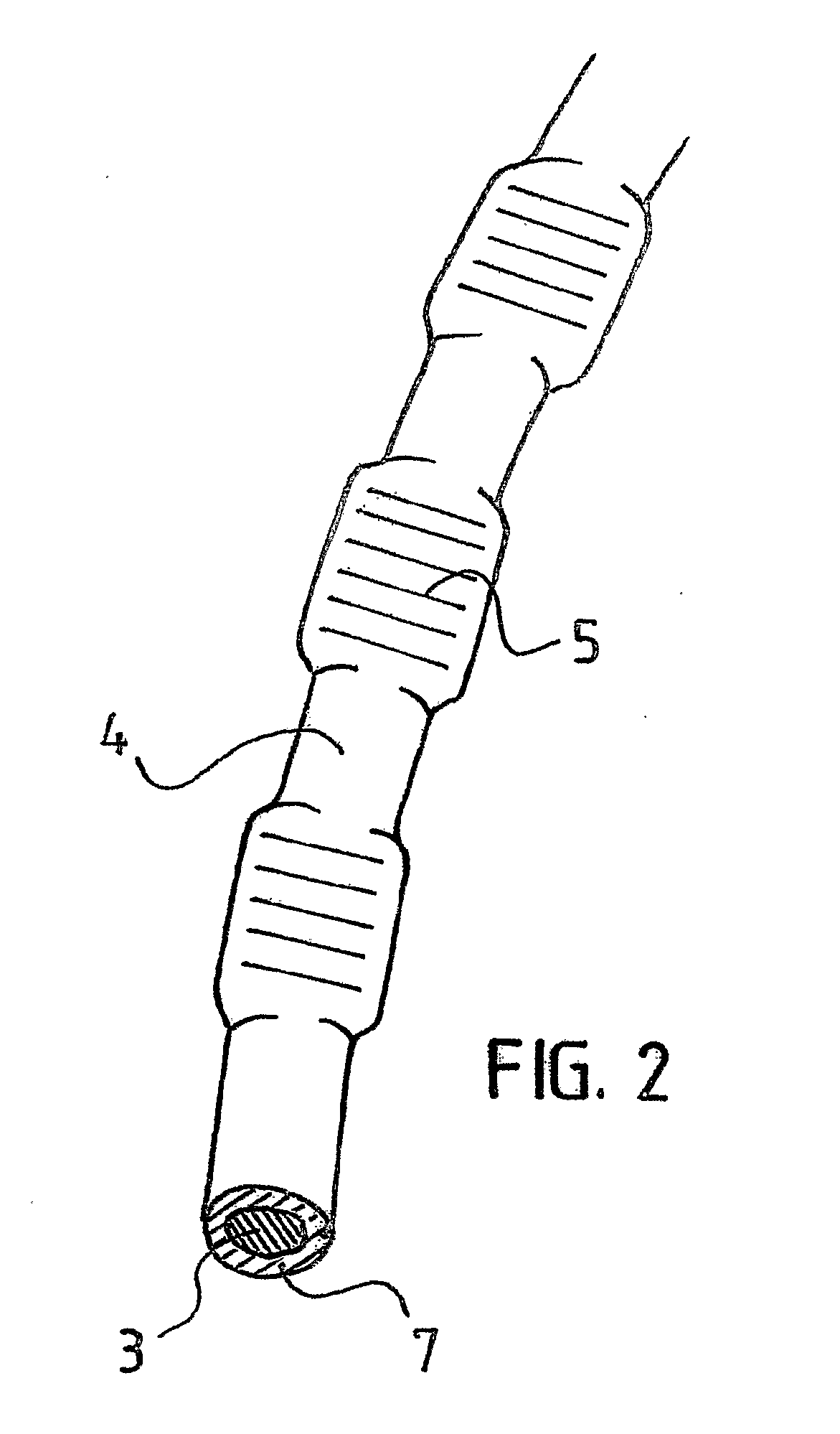Bi-Component Plastic Fibers For Application in Cement-Bonded Building Materials
a technology of cement-bonded building materials and bi-components, applied in the field of special plastic fibers, can solve the problem of reducing the application of expensive components, and achieve the effects of reducing costs, small extension, and high tensile strength
- Summary
- Abstract
- Description
- Claims
- Application Information
AI Technical Summary
Benefits of technology
Problems solved by technology
Method used
Image
Examples
Embodiment Construction
[0022]Some basic facts are explained here before dealing with the individual figures. Fibers which may be applied into concrete, in contrast to fibers in fiber cement products, have a significantly larger diameter of 0.15 to 2 mm, since otherwise with the usual fiber dosages for mechanical reinforcement, which is to say in the region of 0.3 to 2% by volume, one may not achieve an adequate workability of the building material. With such thick fibers, the bonding strength between the fiber and the building material, in particular based on inexpensive low-modular polymers such as polyolefin's, has hitherto been inadequate, since the cross section of the fiber reduces in the case of loading, and thus the fiber may easily slip out of its embedding. An increase of the bonding strength by way of a suitable polymer selection or by way of the increase of the adhesion to the concrete due to the increase of the surface tension of the fibers or due to a corona-, plasma- or fluoride treatment, o...
PUM
| Property | Measurement | Unit |
|---|---|---|
| diameter | aaaaa | aaaaa |
| diameter | aaaaa | aaaaa |
| diameter | aaaaa | aaaaa |
Abstract
Description
Claims
Application Information
 Login to View More
Login to View More - R&D
- Intellectual Property
- Life Sciences
- Materials
- Tech Scout
- Unparalleled Data Quality
- Higher Quality Content
- 60% Fewer Hallucinations
Browse by: Latest US Patents, China's latest patents, Technical Efficacy Thesaurus, Application Domain, Technology Topic, Popular Technical Reports.
© 2025 PatSnap. All rights reserved.Legal|Privacy policy|Modern Slavery Act Transparency Statement|Sitemap|About US| Contact US: help@patsnap.com



